To the east of Beijing lies another massive city that is also one of China’s four municipalities – Tianjin. Lying just 123 kilometers and just over half an hour by train away, Tianjin has a sort of a sibling rivalry with Beijing – the two share a fierce football rivalry that results in each city’s supporters being banned from attending matches in the other city. Tianjin may not have the history or political heft as the capital, but it has a proud heritage, substantial economy and some impressive Western architecture. This is due to it having been a treaty port during the 19th century where Western nations were allowed to trade and have a presence.
I made a daytrip to Tianjin the day before I started work in Beijing in September 2013, so that was the end of my Beijing tourist days. The weather was quite smoggy, something that I have gotten used to, so I should say Tianjin is much grander than how it appears in the photos below. Tianjin has a subway that only has three lines and was not crowded, so it was easy using it to get around.
I first got out near this bridge where several European-style buildings lined the banks of the Hai river.
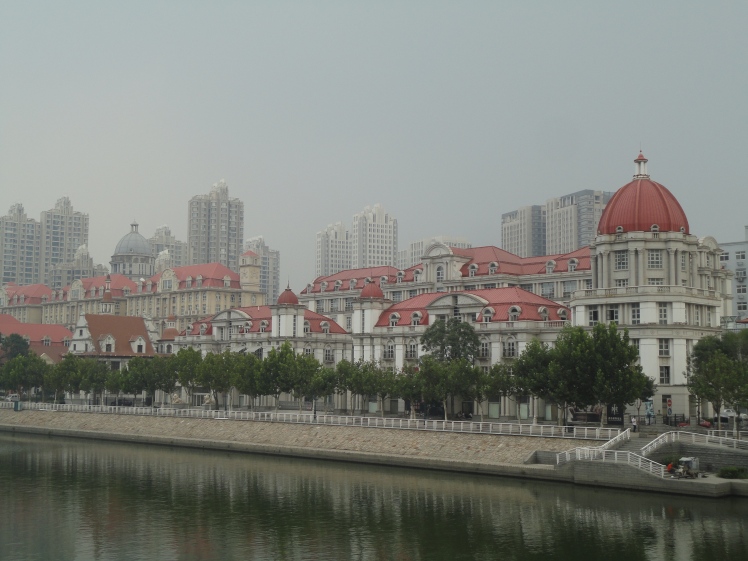
I then went to the Ancient Cultural street or Guwenhua Jie. This street features many old shops and buildings with Qing Dynasty architecture, though the area dates back to the Yuan Dynasty. There is even a small Matsu temple there, which is interesting since Matsu is a goddess of the sea who is commonly worshipped much further south in Fujian province and Taiwan, as well as Zhejiang province and Hong Kong. Tianjin is a port city so its fishermen also worshipped Matsu in old times, and the temple is, according to Wikipedia, the northernmost Matsu temple.
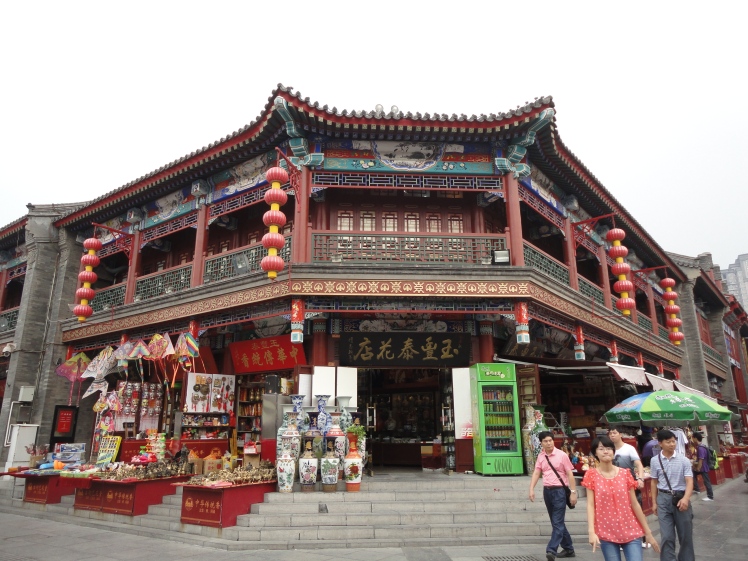
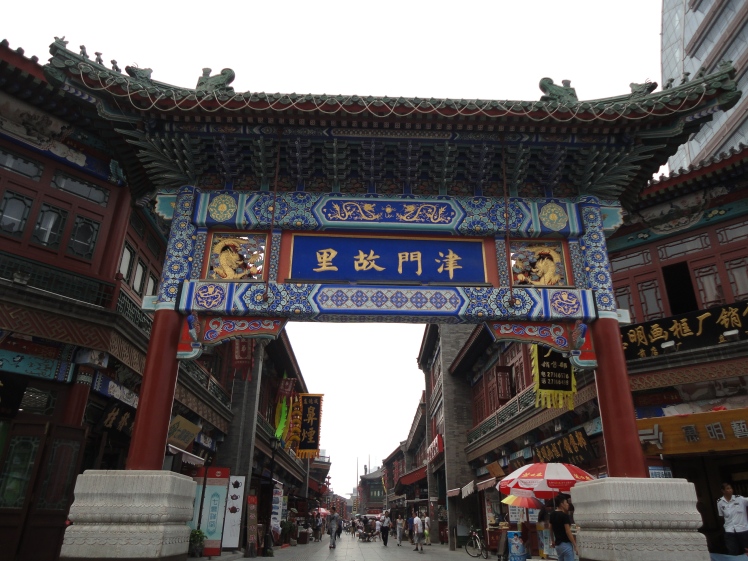
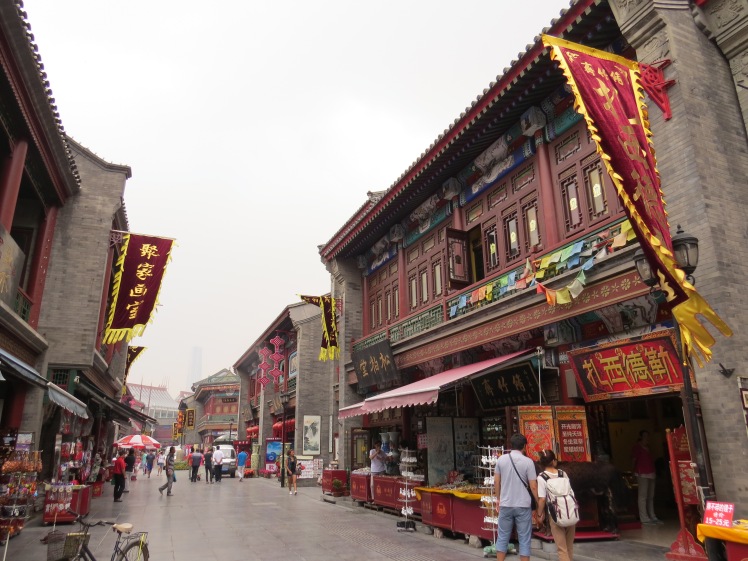
Then I went to Wudadao or Five Grand Avenues, an entire district that is one of the best places to see Tianjin’s European heritage. The district has five parallel streets named after Southwest Chinese cities, filled with houses, mansions and buildings built in various European styles, as well as a few churches. Because Tianjin had a very diverse presence including the British, French, Germans, and Italians, the houses are in such different styles. In keeping with the 19th century European setting, there were even horse-drawn carriages carrying tourists on the streets.
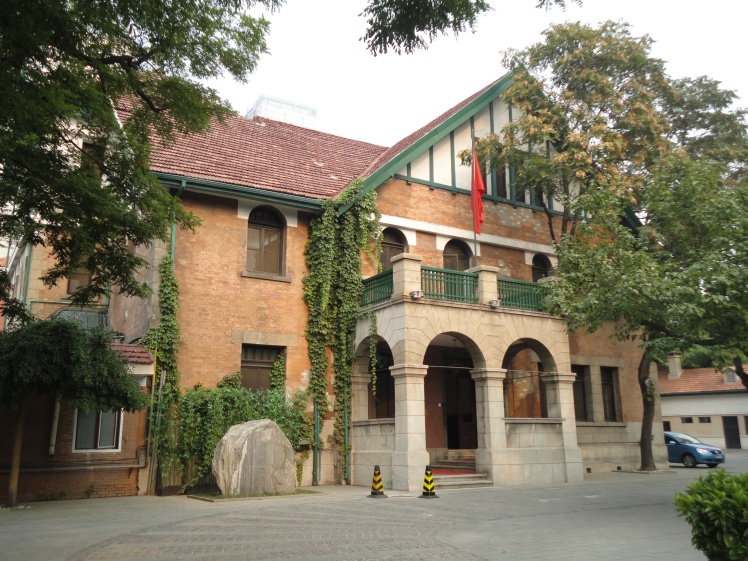
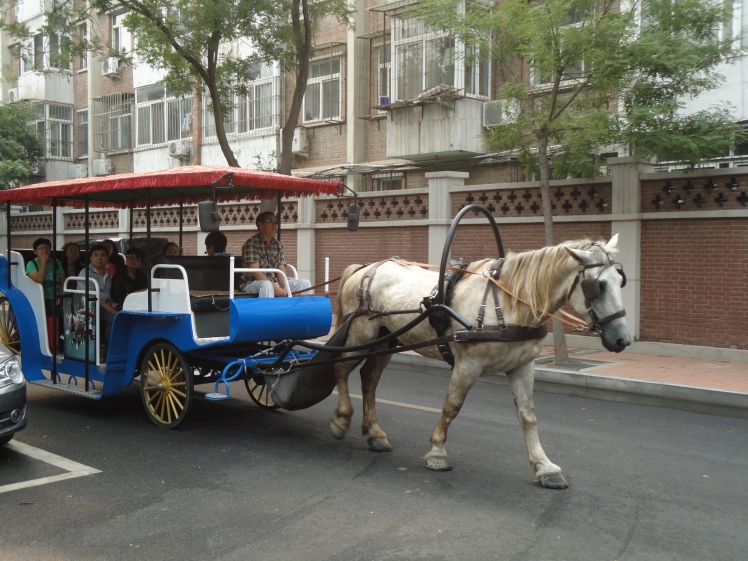
The houses were mostly built in the 1920s and 1930s by wealthy Chinese, even a few warlords, such as one Sun Dianying who tried to rob the tomb of the Qianlong Emperor, according to one of the signs there. Many respected figures like national leaders, educators and businessmen also lived there.
Many of the houses have been converted to cafes and restaurants, and there are artsy places like an open complex with red-brick townhouses with cafes and art galleries, though it seemed very new and empty. There. I saw what seemed to be a stadium that was under construction, but it turns out it was a former football stadium that was being converted into a park and cultural center (it is now open to the public).


In keeping with the area’s unique vibe, the traffic lights were futuristic-looking rectangular forms that displayed the lights as blocks.
The district is quite pleasant and the houses are mostly attractive, though there isn’t any one grand building that stands out. All in all, the mansions, red-brick homes and well-laid-out sidewalks certainly make it stand out and with a little imagination, you can almost believe you’re in some European city and not in mainland China. The only concern is if the area gets too developed in terms of tourism and becomes a bit sterile.
After walking around Wudadao for a couple of hours, I went back to Beijing.
On my way to the subway station near Wudadao, I did have one amusing experience. I passed a girl handing out flyers for English lessons and as she gave me one, she started telling me about the class details. I tried to reply in Chinese that I wasn’t interested, and immediately she realized I probably wasn’t really Chinese – “Oh, you probably don’t need these lessons,” she said with a smile and she was right.
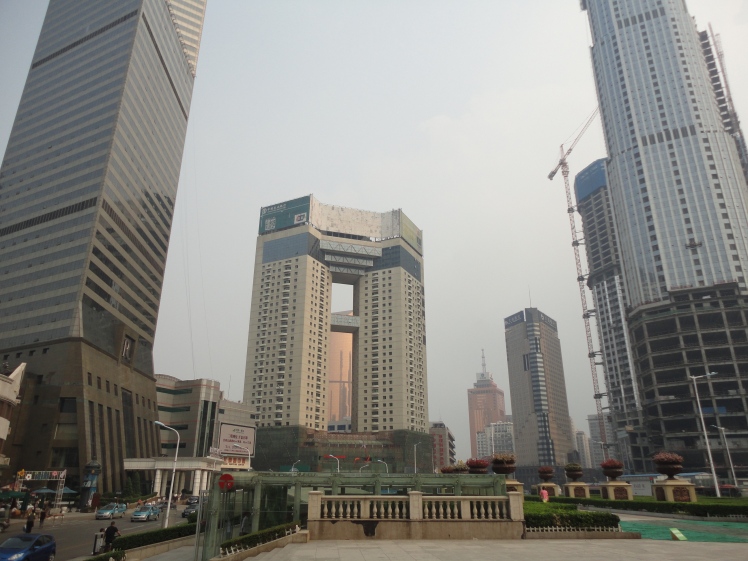
Tianjin has its fair share of tall and interesting buildings. This is by the subway station near Wudadao.

Yuhuang Pavilion, an “assembly center” built during the Ming Dynasty and rebuilt in 1427, just off the Ancient Cultural street
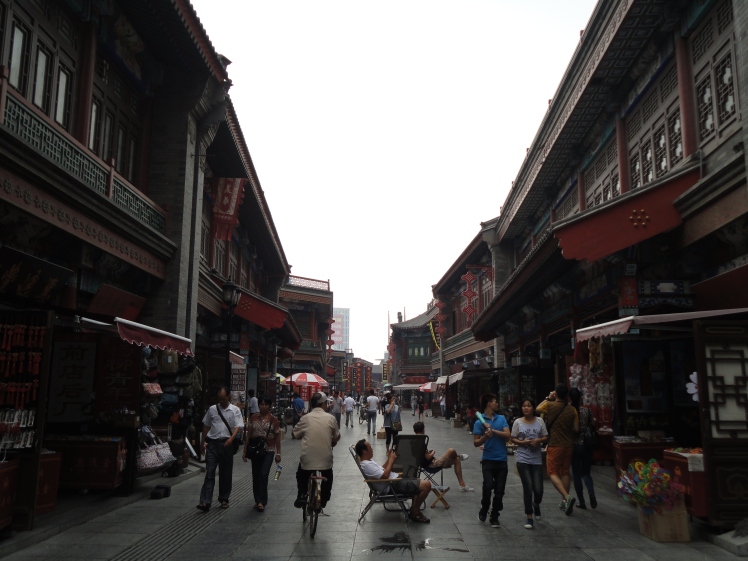
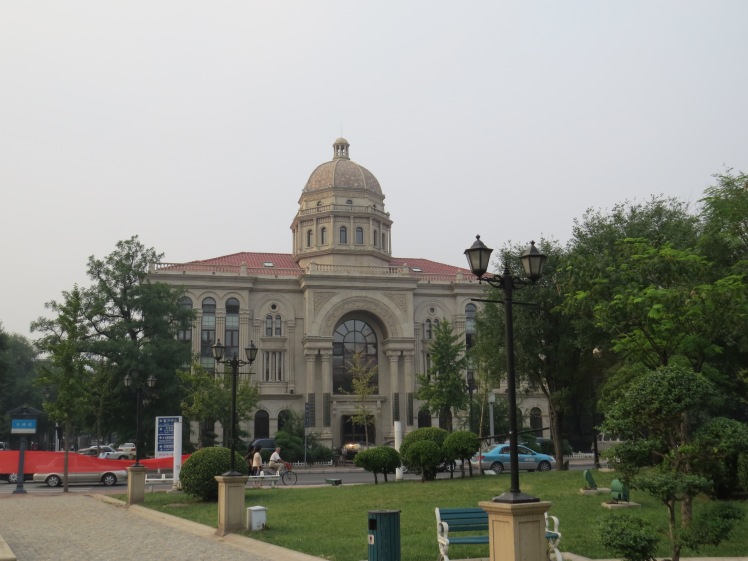
Some buildings like this one were government-owned.
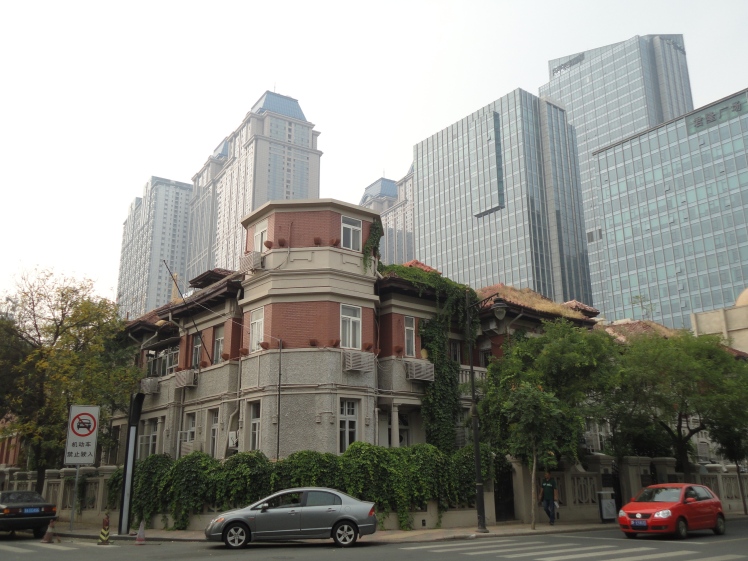


The old stadium in Wadadaou being converted into a park and art center, which is now open

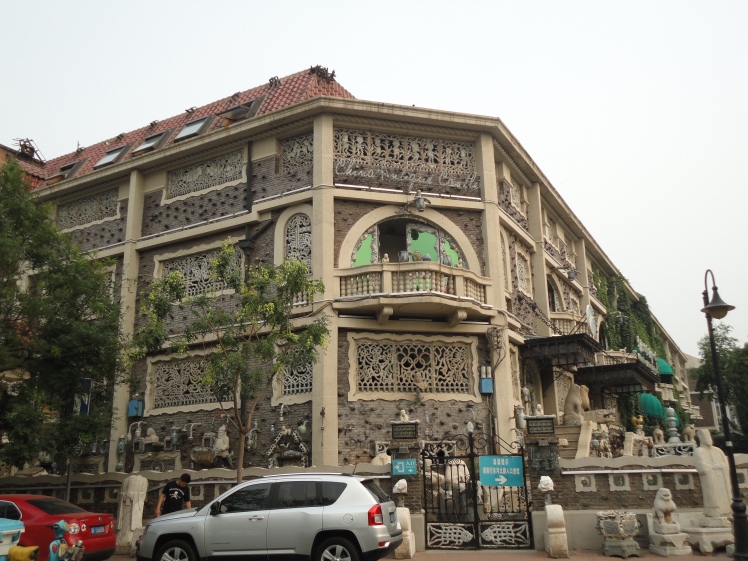
A house decorated with pieces of ceramic and surrounded by sculptures. This is not the famous Porcelain China House which is filled with pottery and jade works, though it has signs with China House on it. Perhaps this building is associated with it.
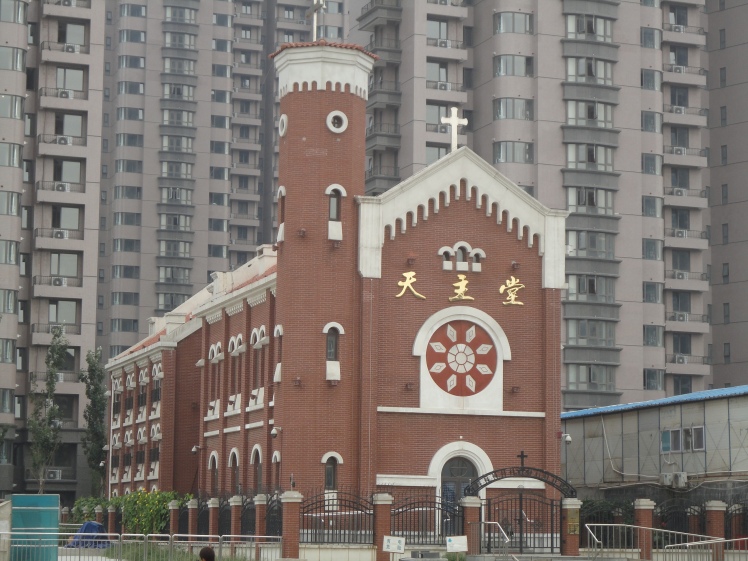

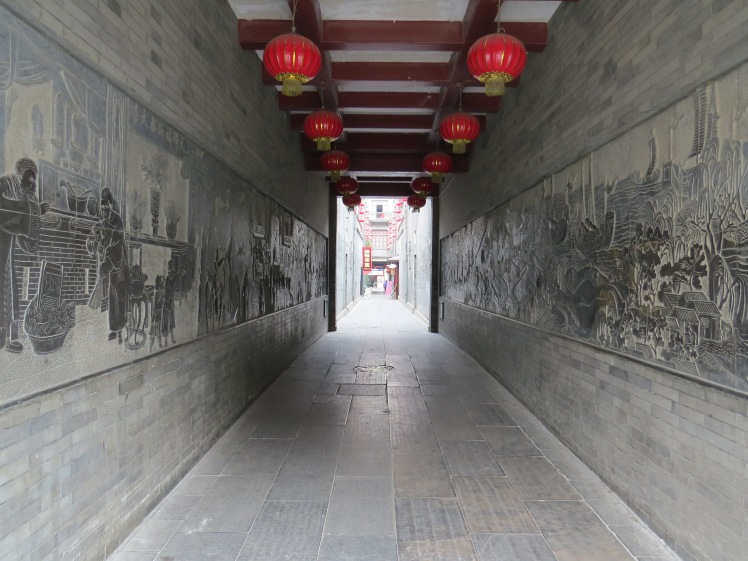
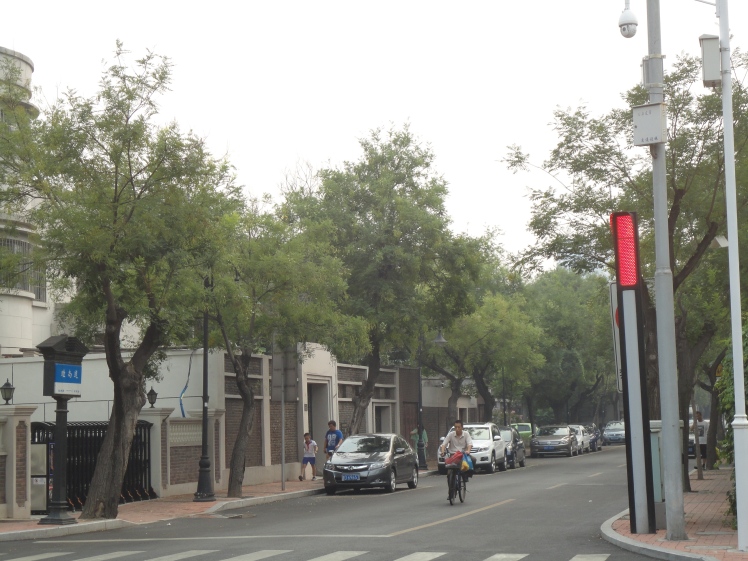
Wonder what’s special about this photo? Look at the right – it’s a traffic light.
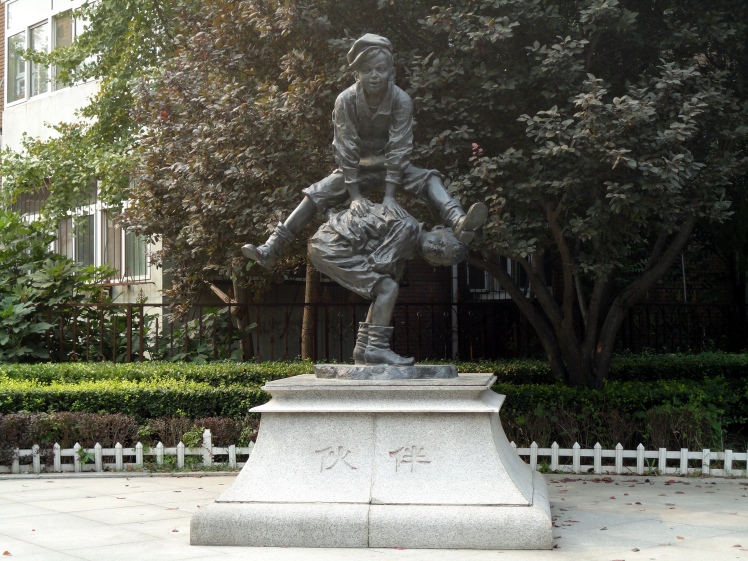
I like Tianjin
LikeLike
I think it’s quite decent and I hope to go again.
LikeLike
It is nice
LikeLike
What a lovely city! It has the feel of a large city but also a rural feel, with both Chinese and western architecture.
LikeLike
Yeah, it is pretty good. I think I will go back again sometime.
LikeLike
Wow it is quite an interesting city. I’m not sure if I missed it but how far is this from Beijing? I love all the photos!
LikeLike
It’s not very far – it’s 123 km away and a little over half an hour by direct train. I’m glad you did :).
LikeLike
Oh yes I’m sorry I reread your post and saw you said that in the beginning of the post and of course with my little attention span, I forgot already by the time I finished reading it the first time haha!
LikeLike
Haha, that’s ok.
LikeLike
I have been to China three times, but never beyond Beijing. I really need to get beyond the city and explore.
LikeLike
That’s a lot of visits to Beijing! Yes, visiting other places in China is definitely suggested.
LikeLike
Nice post, Hilton. I’ve been to Tianjin a couple of times. I’m not sure I would want to live there, but it’s not a bad city.
LikeLike
Thanks, Jimmy.
I was only there for half a day and the places I went to looked quite good. But I know, especially with Chinese cities, appearance isn’t everything. Did you stay there for a while? Coincidentally, I had an ex-colleague who stayed in Tianjin on a university exchange program a few years ago and he thought it was extremely dull.
LikeLike
The longest I’ve stayed there is two days.
LikeLike
This is one of the best reviews I have seen about Tianjin ~ and the photos are excellent. The first shot is one of my favorites, and then also you brought out Wudadao very well…while the area is a bit touristy in strange way, I still love it. Granted, I have spent only a half day in Tianjin, I enjoyed it and its history. Cheers!
LikeLike
Thanks a lot, man, a big compliment. It would have better if it hadn’t been so smoggy. I liked Wudadao too, and could have spent more time there if I hadn’t needed to return to Beijing.
LikeLike
I had the same feeling…time there was short as I too needed to get back to Beijing. I think Tianjin has a case of “Beijing envy” as they really do get overlooked 🙂 Cheers!
LikeLike
Yeah, they do get overlooked a lot. It must be tough always being in Beijing’s shadow, ha.
LikeLike
Nice pictures, thanks for sharing.
I’ve heard that Tianjin speaks the most proper Mandarin, any take on that?
LikeLike
Glad you liked them, Ray.
I can’t really say. I just know they have their specific form of Mandarin and it’s probably similar to Beijing Mandarin. I wasn’t there long enough or talked much to people to listen to it.
LikeLike